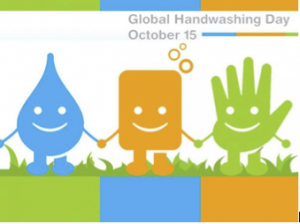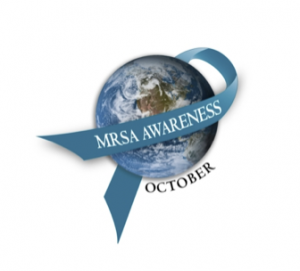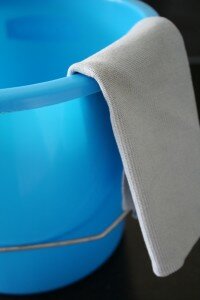A great deal. The nose can identify more than 10,000 odor molecules.1
How does it do it? The mechanism by which a person “reads” an odor molecule is a subject of controversy: The long-time predominant view was that each olfactory receptor in the nose bonds with the odor molecules that are its match in terms of shape.2 A minority view has been that the key is not shape but vibration. The idea is that the receptors can distinguish between two molecules that are identical in shape by passing current through them.3 The latter hypothesis has gained more traction through recent research, but there is no definitive answer4—and the correct answer may be “both”.
The nasal receptors transmit information about the odor molecule to the olfactory bulb5, which is sometimes (though not always)6 considered part of the brain’s limbic system. In any event, the olfactory bulb operates in close conjuntion with the limbic system, which is known as the “emotional brain”.7 The olfactory bulb “communicates with your emotion processor, the amygdala, and your associative learning center, which is housed in the hippocampus.” As a result, the things you smell are linked to the experience you’re having at the time you smell it8—and can subsequently elicit strong emotional responses.
Smell can be an early warning sign of danger, such as when you scent fire or rotting food or a gas leak. The loss of the sense of smell, called asnomia, can be an early warning sign of maladies including Parkinson’s disease, Alzheimer’s, myasthenia gravis,9 multiple sclerosis, diabetes, and Huntington’s disease, among others.10
The power of pleasant smells is being leveraged by the medical profession in the form of aromatherapy. At Memorial Sloan-Kettering Cancer Center in New York, doctors use scent to alleviate people’s anxiety during medical tests. At Duke University Medical Center, menopausal women are being treated with fragrances to help reduce their depression and mood swings.11
Some researchers are decrying the way we obscure our native scents with perfume and recommending that we become more comfortable with our natural smell.12 If more broadly endorsed and taken to an extreme, this view could affect personal hygiene practices. However, it seems unlikely that going “au natural” will take hold so long as people’s sense of smell—and their power to express displeasure at unpleasant odors—remains.
____________________________________________________________
- “How Does the Sense of Smell Work?”, HowStuffWorks, http://science.howstuffworks.com/life/human-biology/question139.htm
- Lisa Zyga, “Quantum Explanation for How We Smell Gets New Support,” PhysOrg (Mar. 28, 2011), http://phys.org/news/2011-03-quantum-explanation.html
- Clay Dillow, “Your Nose Could Use Quantum Tunneling to Distinguish Between Similar Molecules,” PopSci (Feb. 25, 2011), http://www.popsci.com/science/article/2011-02/your-nose-could-leverage-quantum-tools-distinguish-between-similar-molecules
- Bob Yirka, “New Study Strengthens Olfactory-Vibration Theory,” PhysOrg (Jan. 29, 2013), http://phys.org/news/2013-01-olfactory-vibration-sensing-theory.html
- Eric H. Chudler, “The Nose Knows,” Neuroscience for Kids, http://faculty.washington.edu/chudler/nosek.htm
- Anthony Wright (University of Texas Health Science Center at Houston), “Chapter 4: Limbic System: Hippocampus,” http://neuroscience.uth.tmc.edu/s4/chapter05.html
- Sarah Dowdey, “How Smell Works,” How Stuff Works (n.d.) http://science.howstuffworks.com/life/human-biology/smell3.htm
- Science Channel, “How Do Certain Smells Bring Up Old Memories?” http://curiosity.discovery.com/question/how-certain-smells-bring-memories
- “Loss Of Smell Linked To Onset Of Parkinson’s Or Alzheimer’s,” Medical News Today (Oct. 22, 2012), http://www.medicalnewstoday.com/articles/251756.php
- Mayo clinic staff, “Loss of Smell (Anosmia),” http://www.mayoclinic.com/health/loss-of-smell/MY00408/DSECTION=causes
- Prolitec Advanced Air Treatment Systems, “The Science of Smell,” http://www.prolitec.com/science_of_smell.htm
- “Sissel Tolass: The Science of Smell,” Nowness (Jan. 2, 2013), http://www.nowness.com/day/2013/1/2/sissel-tolaas-the-science-of-smell






 Is climate change affecting how diseases spread? The consensus of scientific opinion indicates that it probably is, and almost certainly will in the future. An increase in disease and parasitism is noticeable. While it’s sometimes hard to prove and isolate what causes more rapid infectious disease transmission, there’s little doubt that warmer temperatures have made some previously inhospitable geographies well-suited for the insects or bacteria that carry and spread the disease. Malaria spreading higher on mountains in East Africa, where carrier mosquitoes formerly couldn’t survive, is but one example.
Is climate change affecting how diseases spread? The consensus of scientific opinion indicates that it probably is, and almost certainly will in the future. An increase in disease and parasitism is noticeable. While it’s sometimes hard to prove and isolate what causes more rapid infectious disease transmission, there’s little doubt that warmer temperatures have made some previously inhospitable geographies well-suited for the insects or bacteria that carry and spread the disease. Malaria spreading higher on mountains in East Africa, where carrier mosquitoes formerly couldn’t survive, is but one example. Of course, no one would intentionally wipe a hospital room surface with a towel carrying microbial contaminants. And most people would assume a towel soaking in disinfectant would be free from harmful bacteria. But according to a recent
Of course, no one would intentionally wipe a hospital room surface with a towel carrying microbial contaminants. And most people would assume a towel soaking in disinfectant would be free from harmful bacteria. But according to a recent 